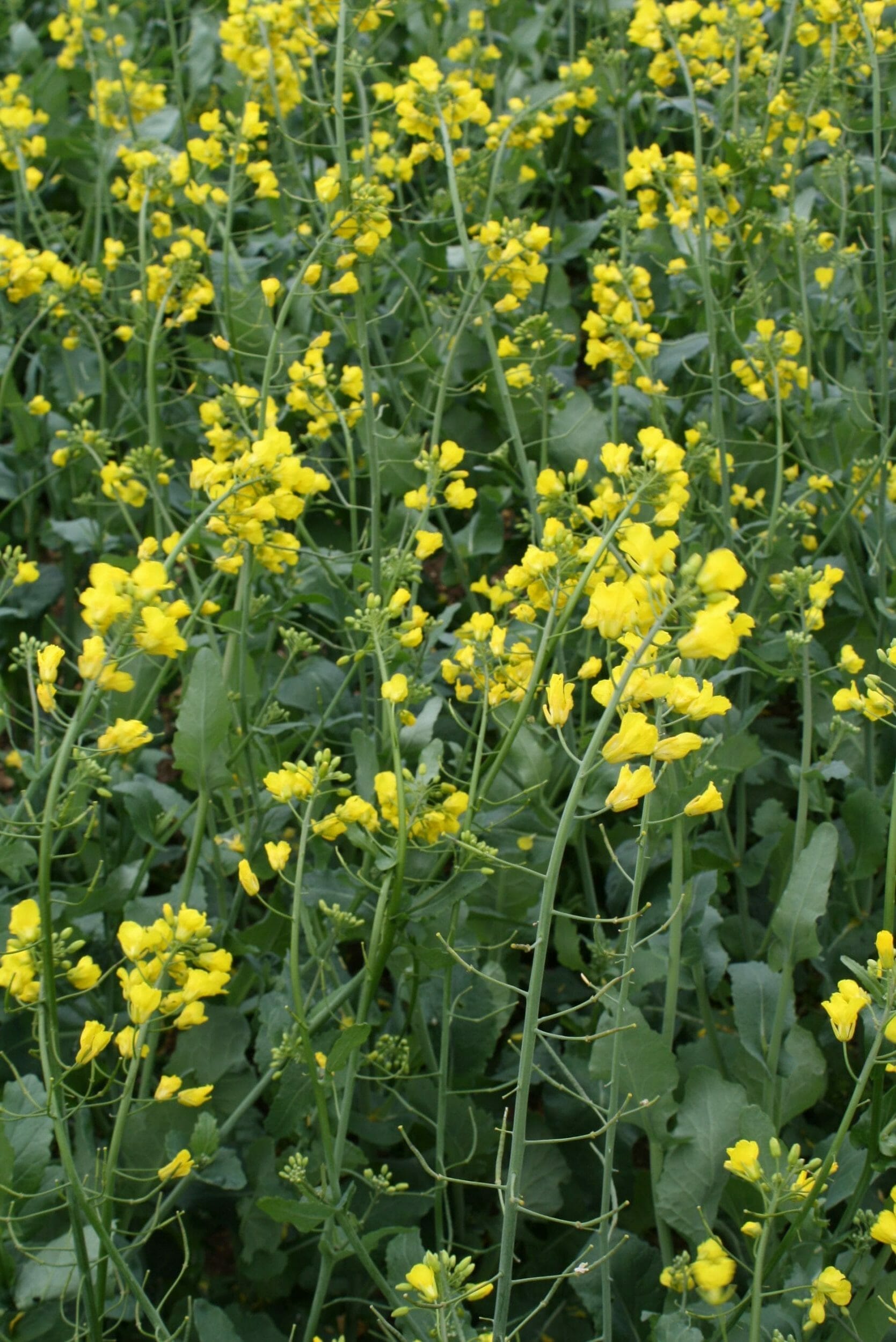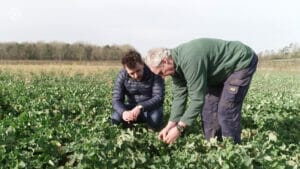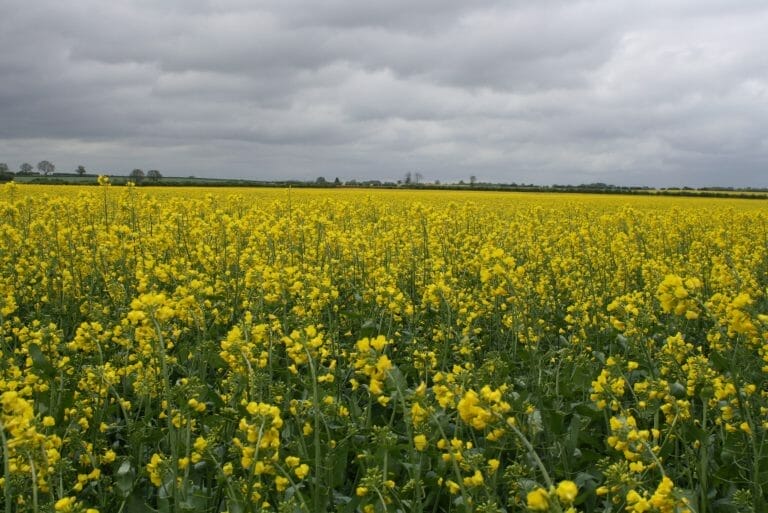
How important is vigour when selecting an oilseed rape variety and how is it measured?
Liam Wilkinson, technical arable officer with breeders Limagrain UK discusses the approach that Limagrain takes to measure vigour and how this value can be used by growers to optimize establishment in their oilseed rape crops. Industry wide there is much debate about the value of vigour in oilseed rape varieties – reflecting the challenges the crop faces from autumn drought, weeds, adult Cabbage Stem Flea Beetle (CSFB) as well the threat from spring CSFB larvae.
If a plant can get up and out of the ground and grow away quickly in the autumn producing biomass, it has a much better chance of survival. It’s a similar story in the spring – when faced with high CSFB larval burdens, the plant needs to ‘wake-up’ and grow away as quickly as possible. A well established plant with a good sized canopy that’s not too large, and has good roots will over-winter better. A well established closed canopy can also have a substantial effect on weed competition, and should not be underestimated. A long tap root is essential for a plant to access the resources to get going again in the spring.
 But how does a grower select a “vigorous” variety when there is no standardised measurement for either autumn or spring vigour? UK growers now have a choice of an excellent range of both hybrid and conventional varieties that offer ‘autumn and spring vigour’ which help to mitigate many of these establishment challenges, continues Mr Wilkinson. But with no standardised measurement for vigour, it’s a claim that anyone can make based on a very subjective basis. Pressure from breeders and growers is pushing the AHDB to recognise the urgent need to address this issue.
But how does a grower select a “vigorous” variety when there is no standardised measurement for either autumn or spring vigour? UK growers now have a choice of an excellent range of both hybrid and conventional varieties that offer ‘autumn and spring vigour’ which help to mitigate many of these establishment challenges, continues Mr Wilkinson. But with no standardised measurement for vigour, it’s a claim that anyone can make based on a very subjective basis. Pressure from breeders and growers is pushing the AHDB to recognise the urgent need to address this issue.
Whilst the AHDB carries out early vigour scores which are recorded on the one year harvest results, it is not a value that is carried over onto the Recommended List (RL). The basis of this scoring is on a sliding scale of 1-9, where 1 is a very weak variety and 9 representing the most vigorous variety on a field by field basis. Clearly this is open to a large amount of interpretation and variation between varieties, fields and locations!
In the absence of official vigour scores on the RL, there are various methodologies that have been adopted to measure vigour across the industry. Remember however, no-one knows a variety as well as the breeder. We pull varieties apart and really understand the genetics behind the growth habits of particular varieties in the autumn and spring- what we call the growth kinetics of the plant- which are genetically set.
Every variety is different; some varieties can be very fast to establish but may slow down later in the autumn whereas others take a bit longer to establish but once their roots are down, they keeping growing later into the autumn, and all of this relates to the ‘vigour of the crop. Limagrain has invested much time and resource into generating ‘absolute vigour scores’ that can be understood and used by growers.
The key starting point is to recognise that vigour is not a point in time measurement, it is a reflection of the plant’s dynamic growth through the autumn and reflects the speed of growth and ability of the plant to accumulate biomass.
This is based on the speed of growth, or the rate of a plants ability to build biomass over a period of time – so the rate of change of Green Area Index (GAI) over time. There are three key stages of growth for an oilseed rape plant.
Phase one: is the early vigour phase, the time taken between sowing and emergence, when the cotyledons are first visible
Phase two: when the plant develops between 4-7 leaves.
Final phase: when the plant reaches 7-20 true leaves after which it starts to shut down for winter. By measuring biomass at each of these stages it provides set of standardised values which we term autumn dynamic growth, that give a much more accurate set of values allowing for varieties to be easily compared.
Spring vigour is tied into daylight changes and how early the plant flowers, or comes out of dormancy, so is more straight forward to measure. Understanding how a particular variety develops at these three stages, and being able to create vigour values related to these, means that as breeders we are very well informed to provide advice on where a variety should be drilled. When plotted on a graph, it is easy to see the differences in autumn dynamic growth between varieties. (See graph below)
The very high yielding hybrid LG Aviron is clearly one of one of the most vigorous varieties, it establishes speedily in the autumn and puts on biomass very quickly, even under testing or challenging situations. Due to LG Aviron’s very vigorous growth right through to winter, it is best to drill it slightly later to prevent it developing too large a canopy, which in itself can cause crop management issues.
Varieties such as LG Antigua and Aurelia can be drilled earlier as they establish and put on biomass well in the autumn which means that they get up and away quickly, but then they tend to sit in the winter, so their canopies do not get too big. Location can influence how vigour rankings are used, for example further north it might be more useful to choose a variety that gets going in the autumn, then sits and waits a bit longer in the spring for conditions to become more favourable, such as once the threat from frosts has passed. Limagrain has put together an overview of all its key oilseed rape varieties with autumn and spring vigour value based on this approach.


































